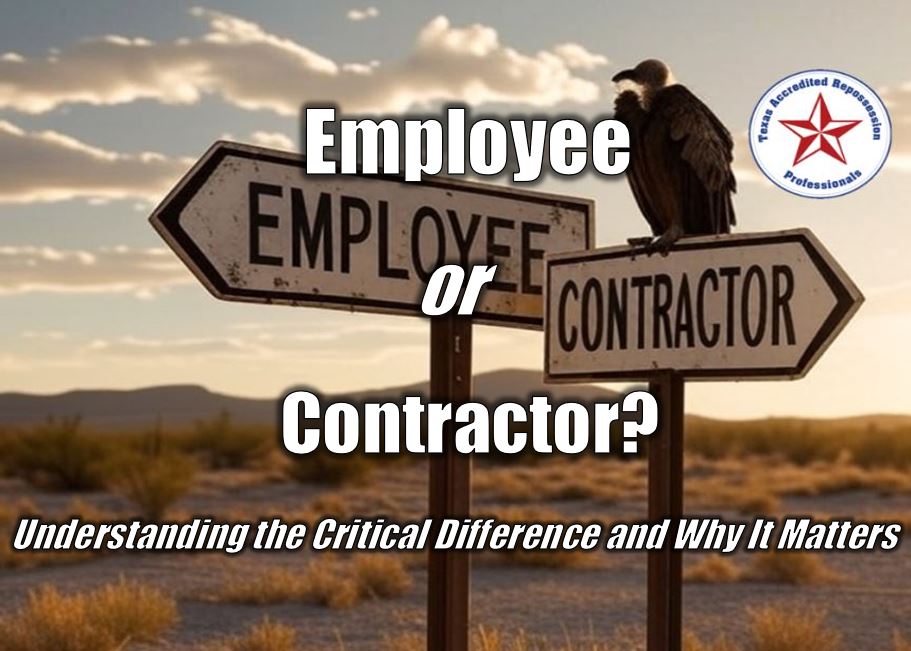–
In today’s dynamic workforce, the lines between traditional employment and independent contracting can often blur. While both W2 employees and 1099 independent contractors contribute significantly to businesses, their legal classifications carry vastly different implications for their rights, benefits, and long-term financial security. Understanding this distinction is crucial for both workers and employers.
The Fundamental Divide: W2 vs. 1099
The core difference between a W2 employee and a 1099 independent contractor boils down to control and dependency.
W2 Employee: Think of a traditional job. A W2 employee works under the direct control and supervision of an employer.
- Control: The employer dictates how, when, and where the work is performed. They provide tools, training, and a workspace. They set schedules and often oversee the methods used.
- Benefits & Protections: W2 employees are typically eligible for a range of employer-provided benefits, including health insurance, paid time off (vacation, sick leave, holidays), and contributions to retirement plans (like 401ks). They are covered by minimum wage laws, overtime rules, unemployment insurance, and workers’ compensation.
- Taxes: The employer withholds federal, state, and local income taxes, as well as Social Security and Medicare taxes (FICA) from each paycheck. The employer also pays a matching portion of FICA taxes and contributes to federal and state unemployment funds.
- Long-Term Security: A significant advantage for W2 employees is the automatic contribution to Social Security and Medicare on their behalf. These employer-matched contributions build a foundation for future retirement income, disability benefits, and healthcare access in old age.
1099 Independent Contractor: These individuals are self-employed business owners who contract their services to various clients.
- Control: Independent contractors generally have significant autonomy. They decide how to perform their work, often set their own hours, use their own tools, and can work for multiple clients simultaneously. They are typically hired for specific projects or outcomes, not ongoing employment.
- No Benefits or Protections: Independent contractors are generally not eligible for benefits, paid leave, unemployment insurance, or workers’ compensation from the hiring entity. They are responsible for their own health insurance, retirement planning, and all business expenses.
- Taxes: No taxes are withheld from their payments. Contractors are responsible for paying their own self-employment taxes (both the employer and employee portions of Social Security and Medicare), estimated income taxes throughout the year, and all business expenses. This requires diligent financial planning.
- Lack of Safety Net: While it is common knowledge that 1099 contractors often receive a higher gross pay to account for the lack of benefits and higher tax burden, a critical and often overlooked aspect is the complete absence of employer contributions to their Social Security and Medicare accounts. When a contractor can no longer work due to age, disability, or economic downturns, they have no employer-contributed safety net for retirement or disability benefits. This places the entire burden of long-term financial security squarely on their shoulders, without the foundational support provided by employment contributions.
The Injustice of Misclassification: When a Contractor is Really an Employee
Unfortunately, it’s not uncommon for individuals who are, in all practical terms, W2 employees to be misclassified as 1099 independent contractors. This misclassification often serves to benefit the employer by:
- Avoiding payroll taxes (employer’s share of FICA, unemployment insurance).
- Eliminating the cost of employee benefits (health insurance, retirement plans, paid time off).
- Reducing administrative burdens associated with payroll and HR.
However, this practice is not only illegal but also a profound injustice to the worker. When an individual performing employee-level duties (e.g., following strict company hours, using company equipment, being supervised, performing core business functions, lacking the ability to seek other clients during the engagement) is labeled a 1099 contractor, they are stripped of fundamental worker protections and long-term financial security.
Consider the example of a “contractor” who:
- Works a regular 9-to-5 schedule at the employer’s office.
- Uses company-provided computers and software.
- Is managed by a supervisor and attends regular team meetings.
- Performs tasks that are integral to the company’s main business.
- Cannot freely work for other clients during their engagement with the “employer.”
In such a scenario, despite the 1099 designation, this individual is effectively an employee. The “higher take-home pay” often cited for contractors can quickly be eroded by the need to cover all their own taxes, health insurance, and the complete lack of employer contributions to Social Security and Medicare. This means that after years of dedicated service, they may find themselves with significantly fewer retirement benefits than a properly classified W2 employee, solely due to an employer’s misclassification.
Seeking Proper Classification
The IRS and state labor departments have strict guidelines to determine proper classification, often looking at factors like behavioral control, financial control, and the type of relationship. If you believe you are being misclassified, it’s crucial to understand your rights. Misclassification can lead to significant legal and financial repercussions for employers, including back taxes, penalties, and interest, as well as potential lawsuits for denied benefits.
Ensuring accurate classification is not just a matter of legal compliance; it’s a matter of fundamental fairness. Workers deserve the protections and long-term security that come with proper employment status, allowing them to build a stable future without the burden of an employer shirking their responsibilities.
Stephanie Findley

President,
Texas Accredited Repossession Professionals (TexasARP)
info@TexasARP.org

















Facebook Comments